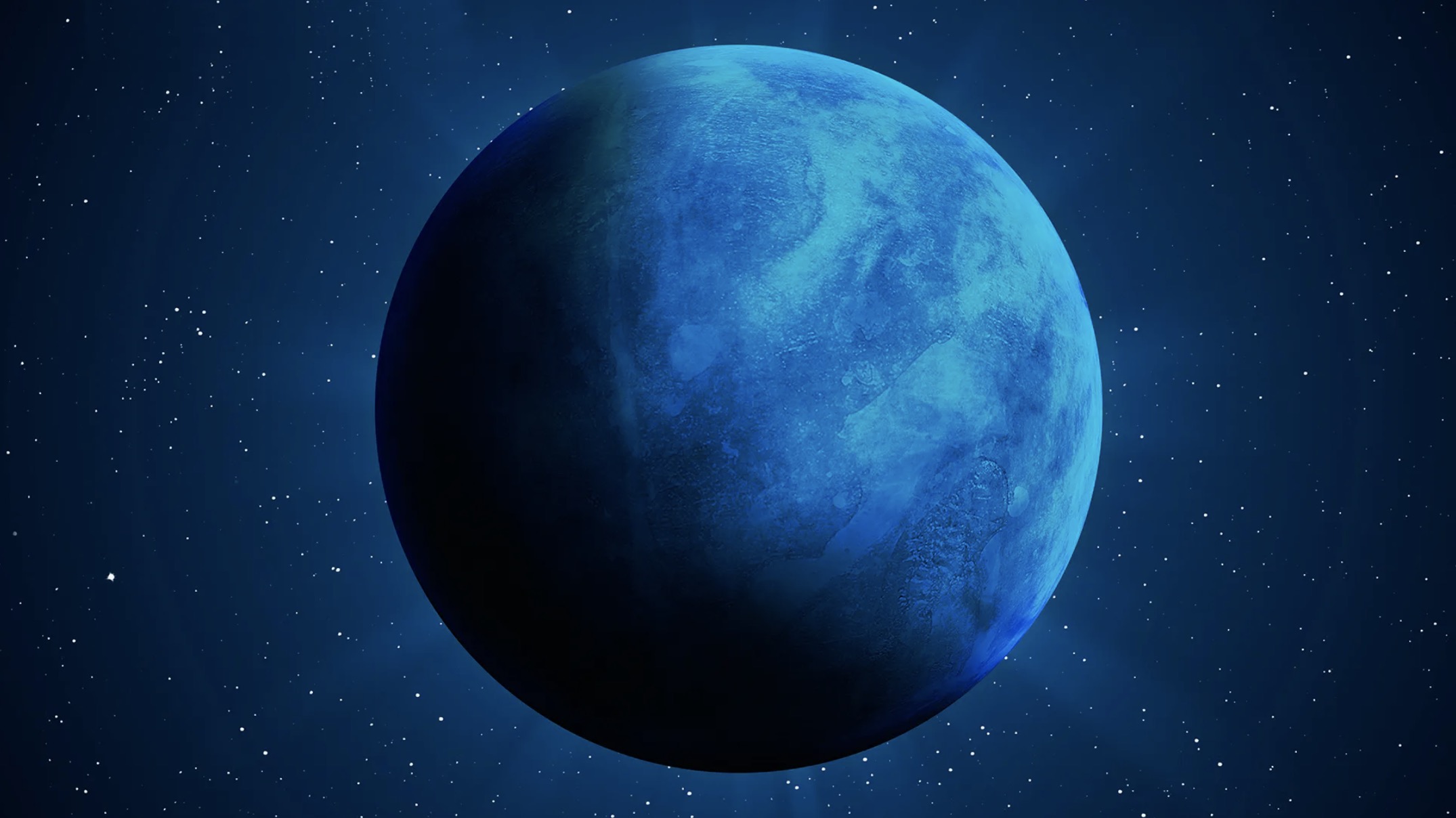SCIENCE-NEPTUNE
- Подробности
- 438
Neptune is the eighth planet from the Sun. It is an ice giant, deep blue because of methane. One day is about 16 hours, and one year is about 165 years. Neptune has very strong winds and dark storms like the Great Dark Spot, plus faint rings and many moons, including Triton (orbits backward and has nitrogen geysers).
NEPTUNE

Neptune is the eighth planet from the Sun. It is an ice giant with lots of water, ammonia, and methane mixed with hydrogen and helium. It was found in 1846 by Johann Galle using math predictions by Urbain Le Verrier and John Couch Adams.
Neptune is about 30.07 AU from the Sun (about 4.50 billion km). It takes about 164.8 Earth years to go around the Sun once. One day on Neptune is about 16 h 6 m. Its mean radius is about 24,622 km, and its mass is about 17.1 Earths. The air at the top of the clouds is very cold—about 55–60 K (about −220 °C).
The atmosphere is mostly hydrogen and helium with a few percent methane. Methane absorbs red light, so Neptune looks deep blue. There are strong jet streams and big storms like the Great Dark Spot. Winds can be faster than 2,000 km/h.
Neptune has a tilted and off-center magnetic field. It also has faint rings called Galle, Le Verrier, Lassell, Arago, and Adams. In the outer Adams ring there are bright ring arcs.
There are 14 known moons. The biggest is Triton, which orbits backward and was likely captured from the Kuiper Belt. Triton has young, icy land and nitrogen geysers. We learned a lot from the Voyager 2 flyby in 1989 and from telescopes on Earth and in space. Future missions may send an orbiter to study Neptune and its moons in detail.
LISTEN TO THE TEXT





 Как правильно изучать английский язык по карточкам (статьи)
Как правильно изучать английский язык по карточкам (статьи)